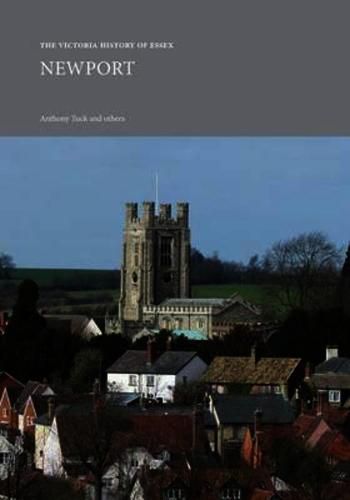Readings Newsletter
Become a Readings Member to make your shopping experience even easier.
Sign in or sign up for free!
You’re not far away from qualifying for FREE standard shipping within Australia
You’ve qualified for FREE standard shipping within Australia
The cart is loading…






The
parish of Newport lies in the valley of the river Cam in north-west
Essex about three and a half miles south-west of the market town of
Saffron Walden, and a short distance from
the Hertfordshire and Cambridgeshire borders. It probably originated in
the early 10th century as a royal foundation, and it soon developed
some urban features such as a market. Its position on an important
through route between London and East Anglia gave
it a more varied character than some of its neighbouring villages, and
the coming of the railway in the 19th century led to the establishment
of a gas works and maltings. Even so, it remained a largely agricultural
community until the mid 20th century, but
thereafter its position as a thoroughfare village helped to establish
Newport as a community with most of its adult population finding work
elsewhere, some in London.
This
book explores the varying character of Newport over eleven centuries.
It examines the changing patterns of landownership, social structure and
economy of the village and its institutions,
not least its 16th-century grammar school. It also discusses the part
played, especially in the 18th, 19th and 20th centuries, by the owners
of Shortgrove Hall, within the parish, and Quendon Hall, a few miles to
the south.
$9.00 standard shipping within Australia
FREE standard shipping within Australia for orders over $100.00
Express & International shipping calculated at checkout
The
parish of Newport lies in the valley of the river Cam in north-west
Essex about three and a half miles south-west of the market town of
Saffron Walden, and a short distance from
the Hertfordshire and Cambridgeshire borders. It probably originated in
the early 10th century as a royal foundation, and it soon developed
some urban features such as a market. Its position on an important
through route between London and East Anglia gave
it a more varied character than some of its neighbouring villages, and
the coming of the railway in the 19th century led to the establishment
of a gas works and maltings. Even so, it remained a largely agricultural
community until the mid 20th century, but
thereafter its position as a thoroughfare village helped to establish
Newport as a community with most of its adult population finding work
elsewhere, some in London.
This
book explores the varying character of Newport over eleven centuries.
It examines the changing patterns of landownership, social structure and
economy of the village and its institutions,
not least its 16th-century grammar school. It also discusses the part
played, especially in the 18th, 19th and 20th centuries, by the owners
of Shortgrove Hall, within the parish, and Quendon Hall, a few miles to
the south.